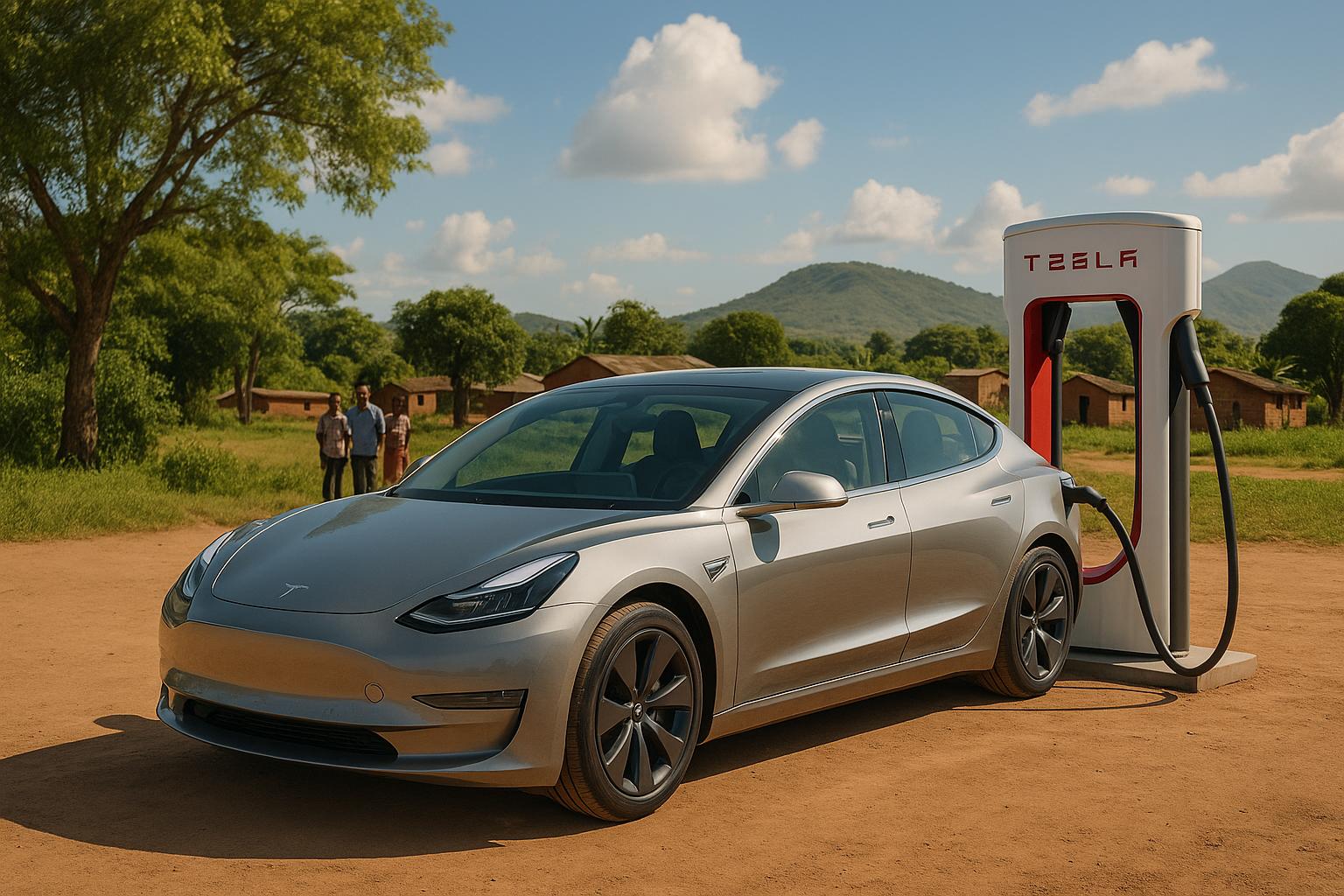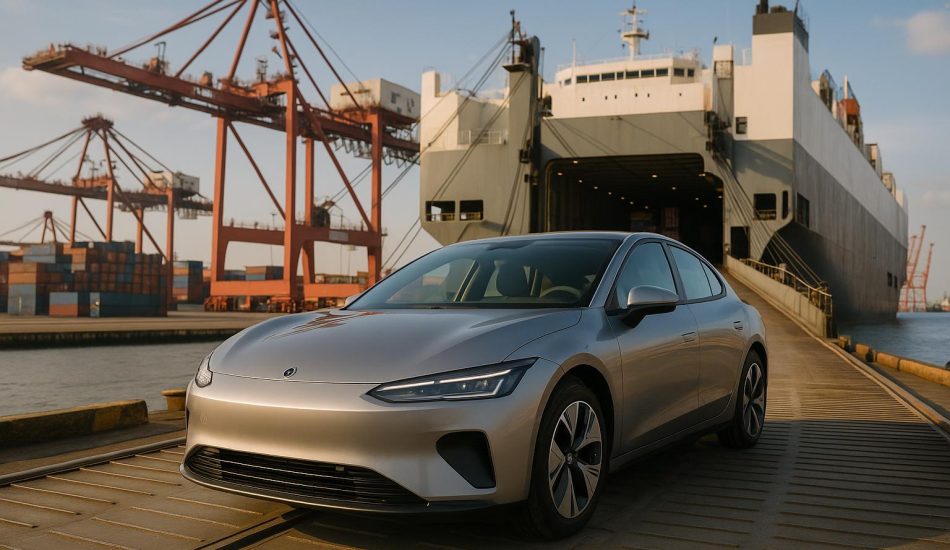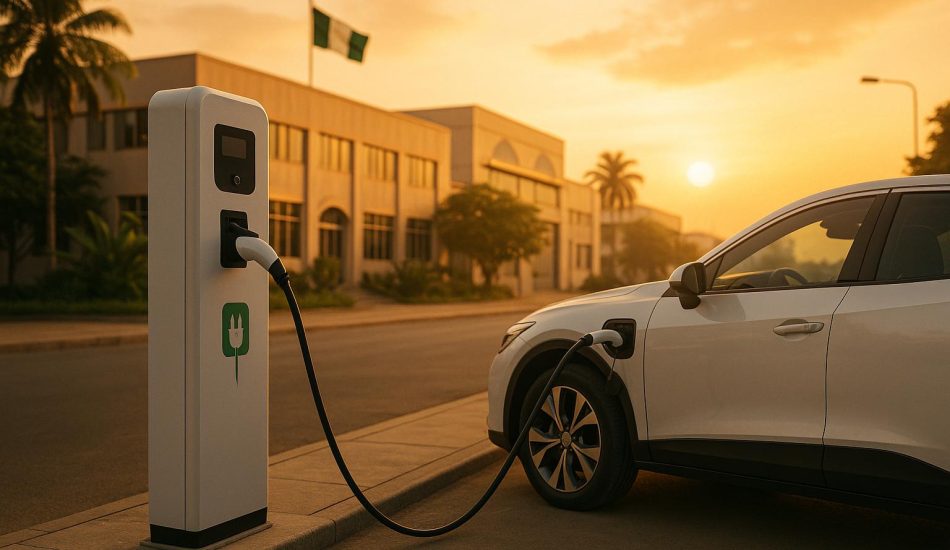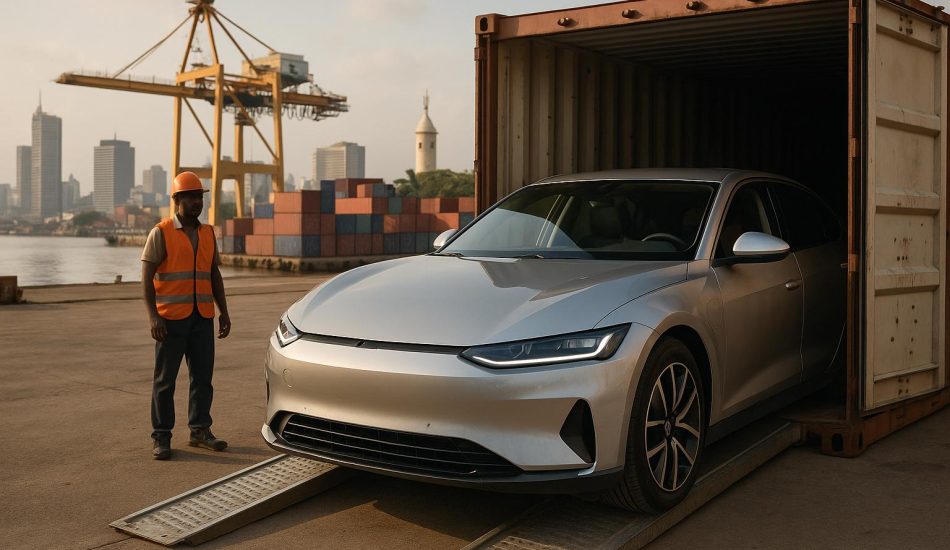
Tesla‘s arrival in Malawi is reshaping the local car market. With 0% import duty, 0% excise tax, and 8% VAT starting in 2025, electric vehicles (EVs) are now 30-40% cheaper than traditional gas-powered cars. Combine this with Malawi’s reliance on hydropower and solar energy, and EVs like Tesla are becoming a cost-effective choice for urban drivers in cities like Lilongwe and Blantyre.
Here’s what you need to know about Tesla models in Malawi:
- Model S: A luxury sedan with up to 410 miles of range and high-end features like a 17-inch touchscreen and premium audio.
- Model Y: A family-friendly SUV offering spacious interiors and all-wheel drive, ideal for Malawi’s mixed road conditions.
- Model 3: The most affordable Tesla, perfect for daily commutes with rear-wheel and all-wheel drive options.
Prices: A used 2021 Tesla Model 3 with 24,000 km is priced at $15,556, but import fees, shipping, and registration will raise the total cost.
Charging: Public charging is limited to urban hubs, so most owners rely on home setups, often paired with solar solutions to offset grid unreliability.
Challenges: Limited EV maintenance services and higher insurance costs are key hurdles, but lower energy and upkeep costs make Teslas attractive long-term.
Outlook: While Tesla’s market in Malawi is still developing, growing interest in EVs, government incentives, and expanding infrastructure signal a promising future.
If you’re considering a Tesla, focus on total costs (import fees, home charging setup), local road conditions, and your driving needs. For urban drivers with access to charging, Tesla offers a cleaner, cheaper alternative to gas cars.
Electric Vehicles Hit the Roads in Malawi | VOANews

Tesla Models Available in Malawi
Tesla offers three main models in Malawi, each catering to different needs and preferences. Here’s a closer look at these vehicles and what they bring to the table in Malawi’s growing electric vehicle (EV) scene.
Tesla Model S: A Blend of Luxury and Performance
The Model S stands as Tesla’s flagship luxury sedan, featuring updates for 2025 that include fresh paint options like Frost Blue Metallic and new wheel designs such as the 19″ Magnetite and 21″ Velarium choices.
This model comes in two versions: the Standard dual-motor, all-wheel-drive variant with an EPA estimated range of 410 miles, and the Plaid tri-motor version, which boasts over 1,000 horsepower and accelerates from 0 to 60 mph in just 1.99 seconds.
Inside, the Model S is packed with premium features, including a 17-inch infotainment touchscreen, an 8-inch second-row display, and a 22-speaker, 960-watt audio system. Its hatchback design also provides 28 cubic feet of cargo space, making it a practical choice without compromising on luxury or performance.
Tesla Model Y: A Practical and Versatile SUV
The Model Y is designed with versatility in mind, making it a great fit for families or those needing extra space. One of its standout features is the ability to receive over-the-air updates, which continually improve its performance and functionality. As part of Tesla’s global lineup, the Model Y focuses on combining practicality with cutting-edge technology.
Tesla Model 3: Compact and Cost-Effective
For those looking to enter the world of Tesla without breaking the bank, the Model 3 is an excellent option. Known for its minimalist interior, it features a 15-inch touchscreen that serves as the control center for the vehicle. Buyers can choose between rear-wheel or all-wheel drive configurations, making it a flexible choice for various driving needs.
Other Tesla Models: Not Yet Available in Malawi
While the Model 3 offers an affordable entry point, some Tesla models remain unavailable in Malawi. For instance, the Cybertruck, despite its global popularity, has not been imported due to challenges related to its size, charging infrastructure, and regulations. Similarly, the Tesla Roadster, expected to launch globally in 2026 or 2027, has yet to make its way to Malawi. Tesla’s commercial vehicles, such as the Semi truck, also face hurdles related to infrastructure, making their entry into the market unlikely for now.
For those interested in these specialty models, keeping an eye on Tesla’s global production updates and consulting with import specialists can help gauge when – or if – these vehicles might become available in Malawi. This dynamic lineup reflects the evolving landscape of EV ownership in the region.
Model Specifications and Comparisons
When deciding between Tesla’s models in Malawi, it’s essential to weigh their performance, features, and capabilities. Each model caters to different priorities: the Model S emphasizes luxury and high performance, the Model Y offers practicality and versatility, and the Model 3 provides an affordable yet efficient option.
The Model S stands out as Tesla’s luxury flagship, delivering an extended range and rapid acceleration. Its high-performance variant is ideal for drivers who crave an exhilarating driving experience.
The Model Y, with its SUV design, combines a higher seating position and generous cargo space, making it a solid choice for families or professionals needing a versatile vehicle.
For those seeking an affordable way into Tesla ownership, the Model 3 is a smart pick. It focuses on essential features and efficient performance, making it perfect for daily commutes. Below is a detailed comparison of the key specifications for each model.
Comparison Table: Key Specifications
| Feature | Model S | Model Y | Model 3 |
|---|---|---|---|
| Starting Price Range | Premium pricing | Mid-range pricing | More affordable option |
| Range | Longest range in the lineup | Strong range performance | Efficient range |
| Acceleration | Exceptionally quick | Balanced performance | Reliable for daily driving |
| Drive Configuration | Dual-motor all-wheel drive | Dual-motor all-wheel drive | Rear-wheel and all-wheel options |
| Seating Capacity | Standard 5-passenger seating | Options for 5 to 7 passengers | Standard 5-passenger seating |
| Cargo Space | Versatile hatchback design | Ample cargo area | Compact cargo space |
| Display Screen | Premium dual-screen setup | Standard central display | Standard central display |
| Audio System | Enhanced premium audio | Enhanced audio system | Standard audio options |
| Ground Clearance | Low for performance handling | Higher for rough terrain | Moderate for daily roads |
| Charging Speed | Fast charging via Supercharger | Fast charging via Supercharger | Fast charging via Supercharger |
This table highlights how each model aligns with Malawi’s driving environment. For instance, the Model Y’s higher ground clearance is particularly suited for navigating unpaved roads or uneven terrain, offering peace of mind in tougher conditions.
Tesla also ensures that all models benefit from ongoing software updates and access to its fast-charging Supercharger network, keeping vehicles efficient and user-friendly over time. Pricing reflects the features and performance levels of each model: the Model S delivers top-tier luxury and speed, the Model Y balances versatility with reasonable pricing, and the Model 3 provides an economical gateway into Tesla’s cutting-edge technology.
Tesla Pricing and Ownership Costs in Malawi
Owning a Tesla in Malawi involves more than just the sticker price. Buyers need to consider import fees, maintenance, and charging expenses to get a clearer picture of the overall costs.
Purchase Price and Import Fees
The cost of a Tesla in Malawi isn’t limited to the base price of the vehicle. Import duties, taxes, registration fees, and shipping charges significantly add to the total. On top of that, fluctuations in the Malawian kwacha can further impact the final price tag. While the base price depends on the Tesla model and global market conditions, these additional expenses mean the total cost of bringing a Tesla to Malawi is considerably higher than the manufacturer’s listed price.
Operating Costs: Charging, Maintenance, Insurance
One of Tesla’s key advantages is lower operating costs compared to traditional gasoline-powered cars, especially when it comes to energy expenses. Charging a Tesla is typically much cheaper than fueling up with gas, reducing the cost per mile. Maintenance is also simpler since Teslas don’t require oil changes or spark plug replacements. However, it’s worth noting that finding specialized Tesla service in Malawi can be a challenge. Repairs might come with a hefty price tag due to the need for trained technicians and specific parts.
Insurance costs for Tesla vehicles can also be higher than those for similar gasoline cars. This is mainly because of the higher replacement and repair costs associated with EVs. Additionally, Tesla owners should budget for routine expenses like tire replacements and occasional software or system updates. These factors make it essential for buyers to explore financing options that can help manage the overall costs.
Financing Options in Malawi
When it comes to financing a Tesla in Malawi, most buyers rely on personal loans. The terms of these loans often depend on an individual’s credit history and the policies of local banks. Unfortunately, few financial institutions offer terms specifically tailored to electric vehicles, and buyers may face the need for a large upfront payment.
For those seeking additional support, EV24.africa provides financing assistance to help potential Tesla owners navigate their options. Leasing, while not widely available in Malawi for individual buyers, could be an option for businesses through direct negotiations with international providers.
sbb-itb-99e19e3
Charging Infrastructure and Tesla Use in Malawi
Owning a Tesla in Malawi comes with its own set of considerations, particularly when it comes to charging options and navigating the country’s road conditions. While the charging infrastructure is still in its early stages, it presents both hurdles and opportunities for Tesla drivers.
Malawi’s EV Charging Network
Malawi’s public charging network is still quite limited. Most charging stations are concentrated in major cities like Lilongwe and Blantyre, leaving rural areas with little to no coverage. The available public chargers are typically standard AC rather than faster DC options, which means longer charging times. For Tesla owners, this often translates to relying on third-party chargers that adhere to universal charging standards. Planning long-distance trips, therefore, requires careful mapping of charging stops. Given these challenges, many Tesla drivers opt for the convenience of home charging.
Home Charging Setup
For Tesla owners in Malawi, setting up a home charging station is often the most practical solution. This usually involves installing a dedicated 240-volt outlet and ensuring the electrical system can handle the load. Costs for the equipment and professional installation can vary depending on local factors, but licensed electricians are essential to ensure the setup meets safety codes.
Malawi’s abundant sunlight also makes solar energy an attractive option for home charging. Solar panels, paired with batteries and inverters, can provide a renewable and more reliable way to charge a Tesla, especially given the inconsistencies of the local power grid. However, the upfront costs for a solar setup can be steep, requiring careful consideration. Beyond charging, the local environment also plays a role in how well the vehicle performs.
Tesla Performance in Malawian Conditions
Malawi’s tropical climate offers some advantages for Tesla vehicles, such as reduced need for cabin heating, which helps conserve battery range. However, frequent use of air conditioning, especially during hot months, can noticeably reduce the vehicle’s range.
Road conditions in Malawi vary widely. While Tesla cars perform well on urban roads and paved highways, their lower ground clearance can be a challenge on unpaved or poorly maintained rural roads. Environmental factors like dust and high humidity can also impact maintenance, making regular cleaning and checkups essential for keeping the vehicle in good shape.
Tesla’s regenerative braking system is particularly useful in hilly or traffic-heavy areas, helping to extend the vehicle’s range. Still, the actual driving range may fall short of EPA estimates due to the varying road conditions and the frequent use of climate controls.
Market Trends and 2025 Tesla Outlook in Malawi
Tesla’s future in Malawi depends on a mix of factors, including market demand, import logistics, and policy changes. While detailed data is scarce, there are clear indicators of growing interest in electric vehicles (EVs).
Tesla Market Presence in Malawi
Currently, Tesla vehicles in Malawi are mostly brought in through personal imports rather than official dealerships. This approach comes with challenges like high import fees and logistical hurdles. Despite these barriers, rising concerns about fuel costs and environmental sustainability are driving interest in EVs. However, the high initial price of Tesla vehicles and the lack of widespread charging infrastructure remain significant obstacles. As policies evolve, these challenges could ease, making Tesla ownership more accessible for Malawians.
Policy Developments and Infrastructure
To address these challenges, the Malawian government is exploring ways to make EVs more affordable and practical. Proposed measures include adjusting import duties, promoting renewable energy, and expanding urban charging stations. Tax incentives for EV purchases are also being considered, which could encourage more people to switch to electric vehicles.
Future Models and Pricing Considerations
By 2025, Tesla’s presence in Malawi could expand, with affordable models likely being the most popular. Pricing will depend on several factors, including global market trends, import taxes, and the value of the local currency. Improvements in charging infrastructure and local maintenance services will also make Teslas more practical for everyday use. Additionally, advancements in battery technology and increased production capacity may help bring prices down over time.
EV24.africa is playing a key role in this growing market by connecting potential buyers with available Tesla vehicles. They provide clear pricing details and help guide buyers through the import process. As Malawi’s EV market evolves, platforms like EV24.africa will continue to bridge the gap between buyers and the growing availability of Teslas.
Key Points for Tesla Buyers in Malawi
Here’s what prospective Tesla buyers in Malawi need to keep in mind:
Model Selection: Tesla offers a range of vehicles to suit different needs. The Model Y stands out for its SUV-like versatility and roomy interior, while the Model 3 provides a more budget-friendly option for those entering the EV market. For those seeking luxury and advanced features, the Model S is the go-to choice. Keep in mind that all vehicles must be imported individually.
Total Investment Costs: Beyond the sticker price, buyers should factor in import duties, shipping fees, and local registration costs. These additional expenses can significantly increase the overall investment.
Charging Infrastructure: Public charging options in Malawi are still developing. Most Tesla owners rely on home charging, which may require electrical upgrades. While a few public charging stations are available in larger cities, long trips will need careful planning. For more details, check the charging section.
Operating Benefits: Tesla vehicles can save money on fuel since electricity is much cheaper than gasoline. They also require less maintenance compared to traditional cars. However, it’s worth noting that access to specialized repair services for EVs in Malawi is still limited.
2025 Market Outlook: By 2025, government policies and gradual improvements in charging infrastructure could impact the cost and ease of Tesla ownership. However, global demand and currency fluctuations are expected to keep prices relatively high. These factors complement the broader market analysis discussed earlier.
Financing and Support: Some local banks offer loans tailored for electric vehicles, and platforms like EV24.africa can assist with customs processes and connect buyers to reliable shipping partners.
Ideal Buyers: Tesla is best suited for individuals who primarily drive in urban areas, have access to home charging, and are prepared to navigate the challenges of a growing EV market.
Keep these considerations in mind as you weigh the decision to purchase a Tesla in Malawi.
FAQs
What should I know before installing a Tesla home charging station in Malawi?
To set up a Tesla home charging station in Malawi, begin by confirming you have a stable 240V power supply, as this is essential for Level 2 chargers like the Tesla Wall Connector. Make sure your home’s electrical system can support the charger’s power needs, which are typically around 60 amps. For added safety, installing a dedicated circuit is highly recommended.
Consulting a qualified local electrician with experience in Tesla chargers and knowledge of Malawi’s electrical standards is crucial. They’ll ensure the installation meets local regulations and is done correctly. Additionally, consider installing a surge protector to protect your equipment from power fluctuations.
How do Tesla’s costs in Malawi compare to traditional gas-powered cars?
Importing and owning a Tesla in Malawi involves higher upfront costs due to import duties, taxes, and shipping fees. However, there’s a silver lining for electric vehicles (EVs) in the country – reduced taxes. EVs benefit from a lowered VAT rate of 8% and are exempt from excise tax, which helps ease some of the financial burden at the start.
Although gas-powered cars might be cheaper to buy initially, Teslas and other EVs are far less expensive to operate. For instance, driving a Tesla costs approximately $1.77 per 100 kilometers, whereas gasoline vehicles cost about $7.20 for the same distance. That’s a potential savings of around $814 annually on fuel alone. Plus, EVs usually require less maintenance, making them a more cost-effective choice over time despite the higher initial price tag.
What is the Malawian government doing to encourage electric vehicle adoption and improve charging infrastructure by 2025?
The Malawian government is taking steps to make electric vehicles (EVs) more accessible and appealing to its citizens. One significant move includes providing financial incentives, such as waiving import duties and reducing VAT on fully electric cars to just 8%. These measures are designed to lower the cost of EVs, making them a more realistic option for consumers.
In addition to financial perks, the government has rolled out an electric mobility framework through the Malawi Energy Regulatory Authority (MERA). This framework sets out clear policies and guidelines to streamline the integration of EVs into the country’s transportation system.
To further support EV adoption, investments in charging infrastructure are being prioritized. Plans focus on building networks in urban centers and along major intercity routes. By improving access to charging stations, the government hopes to alleviate range anxiety and establish a more EV-friendly environment throughout Malawi.




